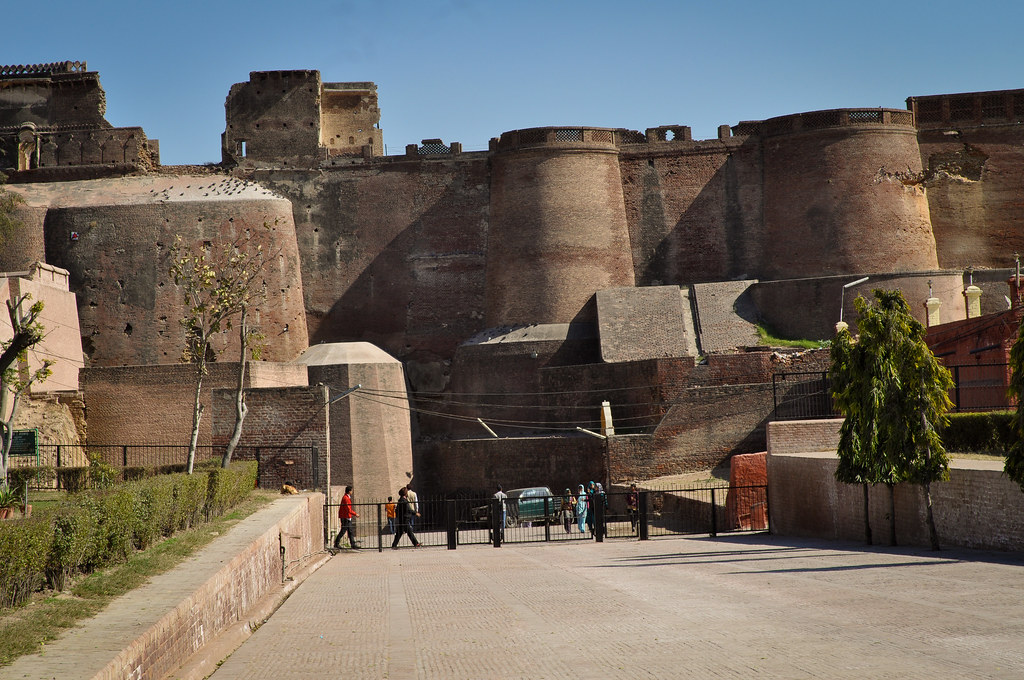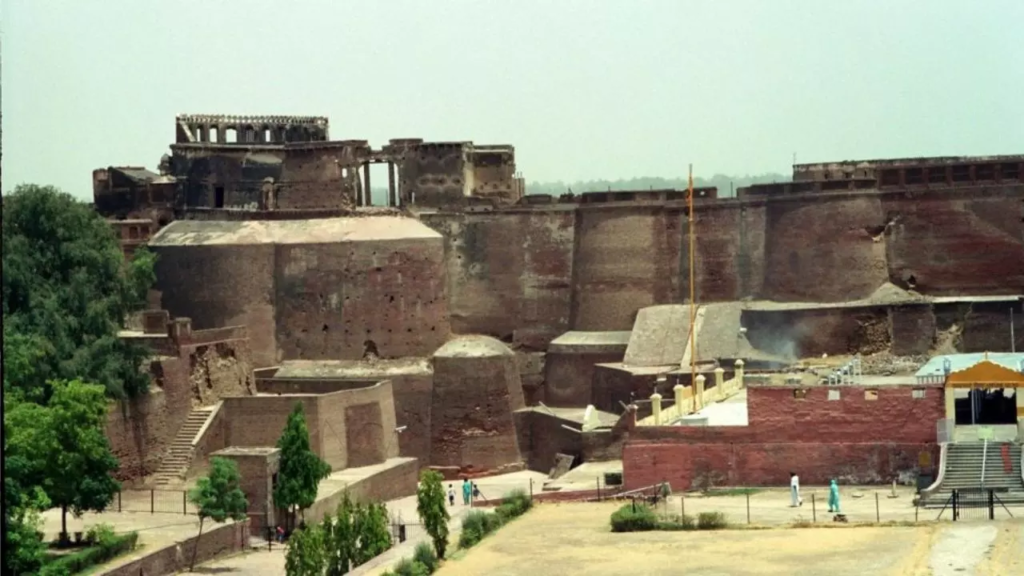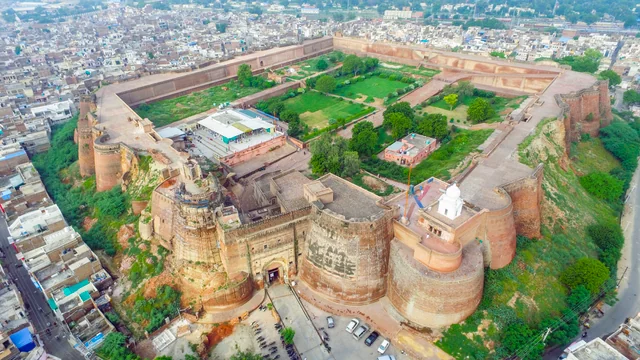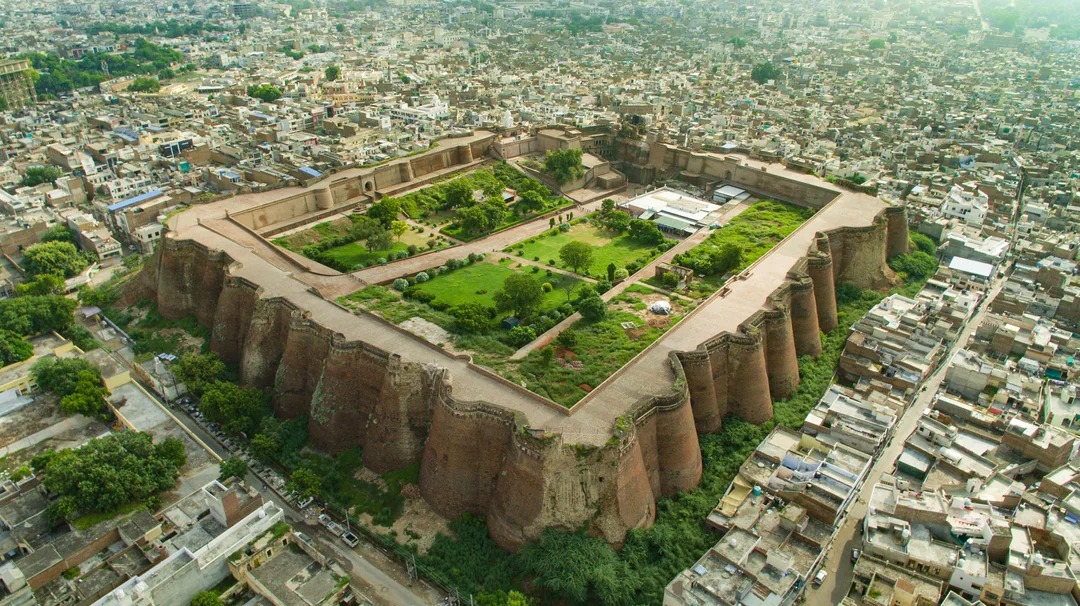Qila Mubarak, a symbol of architectural brilliance and historical significance, stands proudly in the heart of the city of Bathinda, Punjab. Known as the oldest fort in India, this magnificent structure has witnessed centuries of history, serving as a testament to the grandeur of ancient Indian architecture.
As we explore the rich tapestry of Qila Mubarak, we uncover its historical importance, architectural features, and the legends that surround it.
Historical Significance
The roots of Qila Mubarak trace back to the 6th century when it was built by the Kushan dynasty. Its strategic location made it a vital military stronghold, providing protection against invasions. Over the centuries, the fort saw numerous rulers and dynasties, each leaving an indelible mark on its history.
During the reign of the Gurjara-Pratihara dynasty, Qila Mubarak played a crucial role in safeguarding the region from foreign invaders.
Read : Huge Announcement on Alien Life Could Happen Within Weeks: Prof. Simon Holland
Its walls echoed with the tales of valor and bravery, as soldiers defended the fort against the onslaught of various armies. The fort also served as a center for political and military activities, making it a focal point in the history of Punjab.
Read : History of a Fort with a 500-Year-Old Water Harvesting System: Mehrangarh
One of the notable events in the fort’s history occurred during the reign of the famous Mughal emperor, Akbar. It is believed that Akbar visited the fort during his campaigns in the region, further elevating its status. The fort has since been a silent witness to the changing tides of power, from the rise of the Mughals to the establishment of the British Raj.
Architectural Features
Qila Mubarak is a splendid example of Indo-Islamic architecture, showcasing a harmonious blend of Hindu and Islamic styles. The fort’s imposing walls, made of red sandstone, rise majestically, creating a striking silhouette against the sky. The intricate carvings and exquisite motifs adorning the walls reflect the artistic sensibilities of the artisans of that era.
The fort is surrounded by a deep moat, adding to its defensive capabilities. Visitors can access the fort through several gates, with the main entrance being the beautiful “Maharaja Ranjit Singh Gate.” This gate is adorned with ornate carvings and serves as a reminder of the fort’s glorious past.

Inside the fort complex, one can find several structures that enhance its historical significance. The “Qila Mubarak Palace,” where the rulers once resided, is an architectural marvel in itself. The palace features grand courtyards, intricately designed ceilings, and spacious halls that once echoed with laughter and discussions of governance.
The fort also houses a remarkable collection of ancient artifacts and inscriptions, offering a glimpse into the cultural heritage of the region. The presence of several temples and mosques within the fort complex showcases the religious tolerance that prevailed during the era of its construction.
Legends and Myths
Like many historical sites, Qila Mubarak is steeped in legends and myths that add to its mystique. One popular legend tells the story of a hidden treasure buried within the fort’s walls. According to local folklore, the treasure is said to be protected by spirits who guard it fiercely, ensuring that only the worthy can claim it.
Another tale revolves around the fort’s foundation. It is believed that the fort was built on the orders of a powerful king who had a dream of a divine vision. Inspired by this vision, the king constructed the fort as a symbol of his devotion and strength. This story is often shared among locals, who attribute a sense of spirituality to the fort.
Cultural Importance
Qila Mubarak is not just a historical monument; it is a living testament to the rich cultural heritage of Punjab. The fort has become a center for various cultural activities and events, attracting artists, historians, and tourists from around the world. Its majestic architecture and historical significance make it a popular destination for those seeking to explore the roots of Indian history.
The fort is also an integral part of the local community, serving as a venue for festivals and celebrations. The annual “Qila Mubarak Festival” showcases the vibrant culture of Punjab, featuring traditional music, dance, and art. This festival not only promotes local talent but also helps in preserving the rich traditions that have flourished in the region for centuries.
Preservation Efforts
As the oldest fort in India, Qila Mubarak has garnered attention for its preservation and restoration efforts. Recognizing its historical significance, the government and various heritage organizations have initiated programs to protect and maintain the fort. These efforts aim to restore the fort’s original glory while making it accessible to visitors.

Conservation projects have been undertaken to address the wear and tear caused by natural elements and human activities. Skilled artisans and craftsmen work tirelessly to restore the intricate carvings and architectural features that define the fort. Additionally, educational programs are being implemented to raise awareness about the importance of preserving historical sites.
Visiting Qila Mubarak
For those planning to visit Qila Mubarak, the fort offers a unique opportunity to immerse oneself in history and culture. The fort is open to visitors year-round, with guided tours available to provide insights into its rich past. Walking through the fort’s grand corridors, one can almost hear the echoes of history, transporting them back to a time of valor and grandeur.
The fort is also surrounded by lush gardens, making it an ideal spot for picnics and leisurely strolls. The breathtaking views from the fort’s ramparts offer a panoramic glimpse of the surrounding landscape, adding to the overall experience of visiting this historical site.
Accessibility
Located in Bathinda, Qila Mubarak is easily accessible by road and rail. The nearest railway station is just a short distance away, making it convenient for travelers. Local transportation options, including auto-rickshaws and taxis, are readily available for visitors exploring the city.
Best Time to Visit
The ideal time to visit Qila Mubarak is during the winter months, from October to March. The weather during this period is pleasant, allowing visitors to explore the fort comfortably. Additionally, the fort’s surroundings come alive with vibrant flora, enhancing the overall experience.

Qila Mubarak stands as a majestic testament to India’s rich history and architectural brilliance. Its significance as the oldest fort in India is not just a reflection of its age but also of the stories, legends, and cultures that have shaped it over centuries.
As visitors walk through its hallowed corridors, they are reminded of the resilience of the human spirit and the timelessness of history. Preserving Qila Mubarak is not just an obligation; it is a tribute to the generations that came before us, ensuring that the legacy of this extraordinary fort continues to inspire future generations.
let’s enjoy few years on earth with peace and happiness….✍🏼🙏

